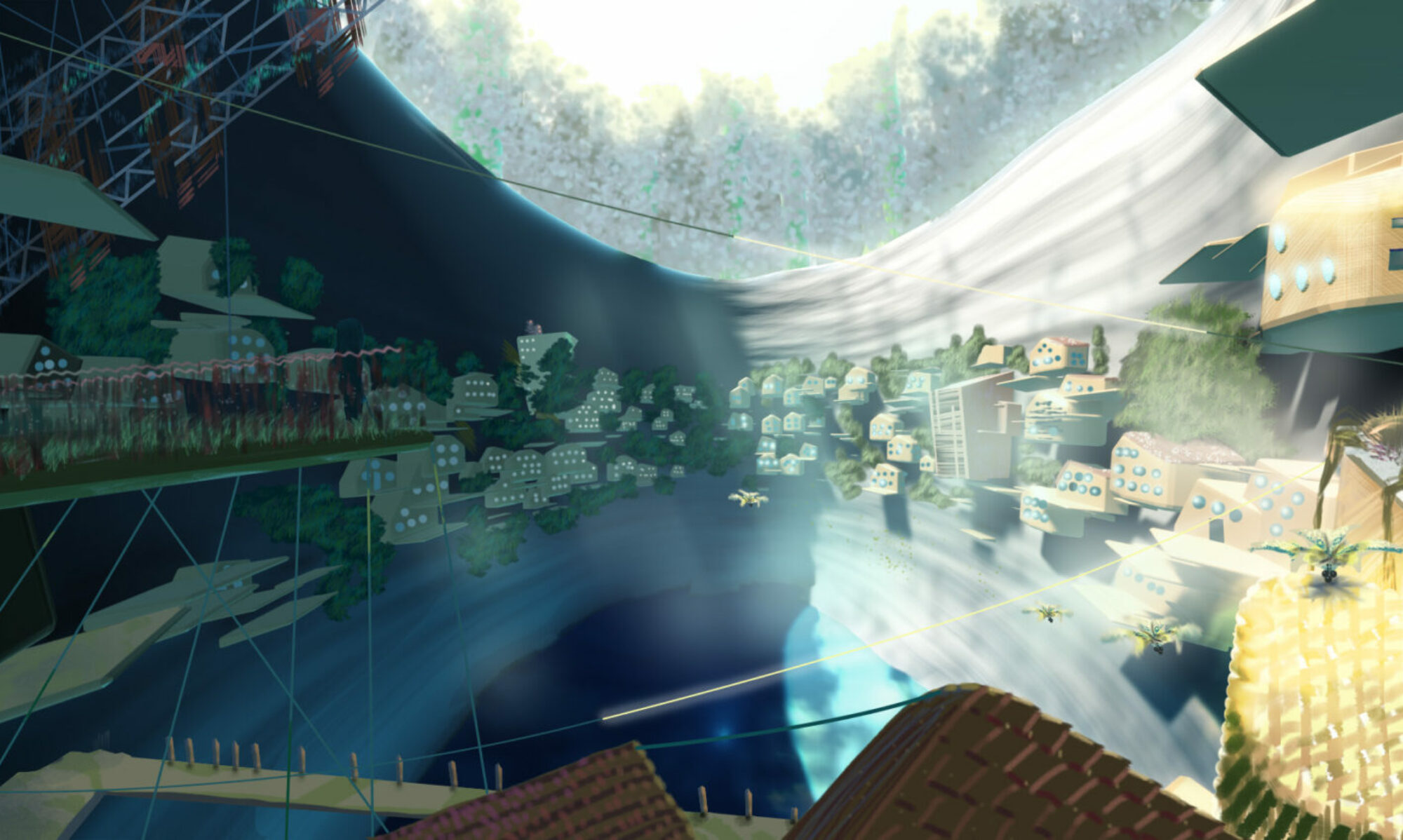Introducing beta 6 of Forest. This release should bring a much higher framerate in all browsers, and a number of small fixes.

Architecture – A Quick Outline
I’ve tried to organize Forest into a series of big JavaScript Objects that group related activities, and Classes to cleanly manage everything I need more than one of. Please take a look at the game loop and WebWorker code if you’re interested in how any of it works. This project is released under an MIT License.
- Control Objects
- World: Manages weather, climate cycles & fps
- Ground: Manages ground conditions, GridTiles, RenderGroups
- Roamers: Everything that needs to be updated each frame, including the camera, the camera’s (invisible) target, lightning bolts, etc.
- Mats: Materials and texture maps, including the ground’s dynamic texture
- Sprites: Lifecycle and behavior management of trees, energy balls, etc.
- PostProcessing: Manages GPU special effects for the scene, like bloom
- Shaders: Overwrites some of Babylon.js‘s shaders with custom versions
- Actors: Container for the Actor classes
- Classes
- GridTile: Manages one point on the map grid, and holds the Actors currently active on it
- TileAlias: GridTiles in the first row and column use these to keep track of the geometry they must also update to smoothly wrap the map
- RenderGroup: A block of GridTiles, which can be prioritized for drawing depending on the camera’s current position
- Fire: An Actor which consumes other actors, then temporarily blackens the GridTile
- Tree: A large, slow-growing Actor
- FallenTree: An Actor which slowly loses mass, producing new soil
- Grass: A small, fast-growing Actor, which greens the GridTile
- DeadGrass: An Actor which slowly loses mass, producing new soil, while it browns the GridTile
- ProtoRoamer: Class containing data fields and actions for things that roam around on the board
- Camera: Subclass of ProtoRoamer, which moves the camera
- Target: Subclass of ProtoRoamer, at which the camera is aimed
- Energy: Subclass of ProtoRoamer, short-lived, produced where you click, which feeds energy to the Actors there
- LightningBolt: Subclass of ProtoRoamer, very short-lived, obliterates all Actors on its GridTile and starts Fires on surrounding tiles
Updates
Better performance in all browsers. Beta 6 moves the process of updating water flow and ground conditions into a WebWorker, a second processor thread. Beta 5 was a major rewrite to accomodate this, moving most of the data of each GridTile object into a single, large Float32Array, and adding Getters/Setters to the GridTile class to make the array data behave like normal properties. Parts of the array can then be rapidly copied, to update the vertex data or to be sent to the worker thread, via the .subarray() function. Data returned from the worker thread can then be copied back into the main array via a .set() operation. Currently, any changes made to the board by Actors or Roamers during thread execution will be overwritten
Better performance in Firefox and Chrome. The GridTile prototype uses Getters/Setters to manipulate the data in the master Float32Array. This was originally done in Beta 5 to allow moving some updating to a WebWorker, but for whatever reason the major speedup of moving the data into the Float32Array alone ended up being worth the change. The index lookups in the Getters/Setters (e.g. ground.data[ground.indices.watertable+this.index]) bring virtually no overhead in Safari, but Chrome and Firefox struggled with them. Beta 6 caches the lookup indices in each object, which speeds up Firefox and Chrome considerably even absent the WebWorker thread.
